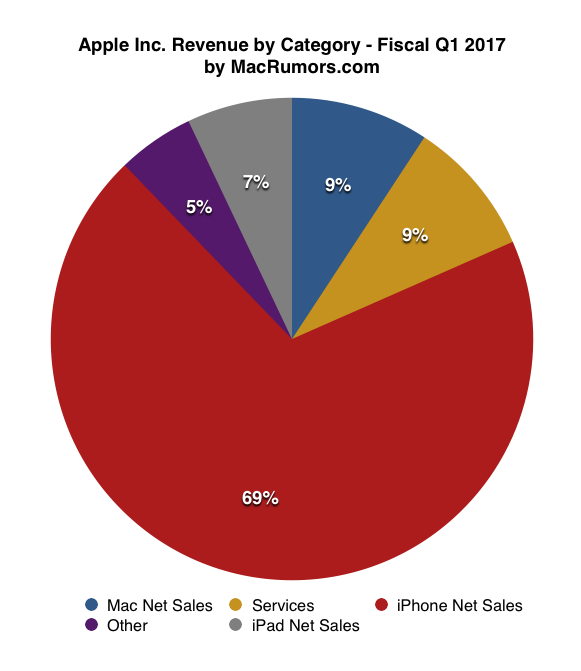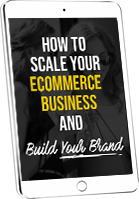(Note: This is one of a series of posts to come around the various ways that marketers are crafting incredible customer experiences. In so doing, they are dramatically improving their customer retention and acquisition efforts, and concurrently building their brand.)
One of the most powerful ways to build customer experience is by tapping into raw human needs and emotions.
A person’s sense of sense, their actual, perceived and desired identity, is one of the more raw and powerful needs to connect with. Many businesses have done an excellent job of using their brands to help customer’s think differently about themselves. When done well, customers are proud to be associated with the brand and willing to show off that association in public. They begin to think of the brand as more than just a product. It becomes part of who they are and, even more powerfully, a reflection of who they want to be.
Of course, a business can use the power of identity in a negative way, manipulating customers through psychological games, but the examples shared in this section come from companies who are using this power in positive ways.
Harley-Davidson: More than a Motorcycle
Harley-Davidson has become one of the best-known brands in the world, in any category. People with absolutely no interest in motorcycles have heard of them and already have a clear sense of the brand’s distinct identity.
While most people associate motorcycles with younger demographics, the average Harley owner is forty, not old but certainly not a 20-something thing. This is due in part to the bikes’ cost; they aren’t cheap. But if you’ve ever met a Harley owner, however, you know they tend to be extremely proud to be a Harley owner. They love to show it off, and “owning a Harley” is a key part of many owners’ identities. They’re didn’t merely purchase a motorcycle; they became a part of a vibrant subculture.
The bikes themselves are loud, brash, and bold. You know when a Harley is moving down the street, and their owners rather enjoy that the bikes aren’t subtle. They didn’t join a membership where the card gets tossed in the trash nor is kept quiet. While it may not always be through their spoken words, but Harley owners scream being Harley owners.
One of the company’s biggest achievements has been transforming their product into more than a product. People know what Harley stands for: freedom, community, and a certain rebellious attitude.
Their website says it more directly, “If you want to fit in, take the bus.”
From a purely technical standpoint, there are probably better motorcycles on the market. However, Harley customers aren’t in it for the technical quality of the product. They are embracing the Harley attitude.
And for its target customers, Harley is giving them exactly what they want in terms of identity. For people in their forties and fifties, many of whom are empty-nesters, and some of whom are struggling through or approaching a midlife crisis, Harley restores for them a sense of youthful rebellion. Riders are able to detach from their jobs and the concerns of their daily lives to take to the open road with a sense of freedom.
While it’s hard to point to a single moment where the brand that had often been associated with the Hell’s Angels and featured in films like “Easy Rider” started attracting a growing following amongst older and more affluent customers (the average age used to be 32 and now it’s in the 40s, with average annual income increasing from $30K to $70K+), what is clear is that once the company noticed the CEOs, bankers and celebrities were taking to their bikes, they leaned in. (As an interesting side note, back in the early 1900s, Harley target farmers, then in the mid part of the century positioned itself as the bike for police officers. To say the brand has evolved and changed its targeting over time is a minor understatement.)
As an example of how the company has leaned in towards shifts in its customer profile, customers choose Harley-Davidson motorcycles because of how they feel and how they want to be as an owner. One way to amplify that feeling is by joining with others. Riding a Harley with others is a big part of being a Harley owner, and the brand encourages such connections with what they call H.O.G. (The Harley Owners Group).
H.O.G. was started in 1983, and today there are over a million club members. It’s the biggest factory-sponsored riding club in the world, and while many people think it’s managed by customers, each club is actually sponsored by a local dealership. In the past, dealers could only sponsor one H.O.G. each, but now they are allowed to sponsor two.
This is a great example of a brand recognizing what their customers would want, well beyond the basic “product,” and then creating opportunities to help their customers feel even more strongly about themselves and the brand.
From a financial side, this of course drives retention in the form of merchandise sales (I think we’ve all seen how decked out Harley riders can be) and certainly additional bike sales. That image and brand story that is then told – whether by hearing an owner talk about it or just seeing them riding down the road with others – no doubt leads to future customer acquisition. In fact, the company used to spend very little dollars in advertising. But that didn’t mean spending nothing on marketing. Their spend would show up in efforts like H.O.G. and other ways to support their customers. How’s that for a different take on marketing? And all the while the brand continues to form, evolve, and grow.
The Beard Club: Are You Man Enough?
The Beard Club began life as Dollar Bear Club, introducing themselves to the world through a video featuring the company founders, Chris Stoikos and Alex Brown, along with the rest of their team. Through that first video, as well as subsequent ones, they have tapped into something deep in the psychology of their target audience.
They aren’t the only company providing products for men with beards, but in each video, they have created a strong sense of what it means to be a man with a beard. They show images and tell stories of bearded men doing cool things, elevating the image of manhood in a positive way. On their website, they even ask the question, “Still don’t think you’re man enough?”
It’s interesting to note that their videos speak both to men who have beards and work to instill a desire to grow one for those who don’t. For bearded men, they’ve created what Seth Godin loves to describe as a “Tribe.” The Beard Club wants bearded men to know they are being spoken to, to know that there is someone who understands them. And The Beard Club wants bearded me to think about themselves differently, as particularly proud not just to have a beard on their face but to remind them that having a beard means being special and different. (Whether this is “true” is irrelevant, it’s the message the brand is telling.)
Their message is also aimed at those who don’t have a beard, to say, “This is what you could have. This is who you could be. This is the life you could live if only you had a beard!”
Of course, any customer knows that having a beard isn’t a magic ticket to a wonderful life. The message is clearly tongue-in-cheek, but it still creates an identity that many men crave. Not only does it create a sense of aspiration, but it offers accessibility: “All this can be yours!” It could even be considered a call to arms: “If you don’t have a beard, grow one!”
What I find helpful in looking at The Beard Club vs. Harley-Davidson is that while the latter used its marketing dollars outside of pure advertising, the videos in which The Beard Club uses this strong sense of identity are primarily customer acquisition vehicles. Sure, they help reinforce the brand message to existing customers. But many of these videos are primarily used to bring on new customers. And for those who lean more towards the performance marketing approach, crafting an experience using identity is no longer something vague but can be integrated with the same data-driven approach, but just done from a creative side to intentionally create an experience, even before someone has become a customer.
Who You Are, Who You Aren’t
It’s important to recognize that Harley-Davidson and The Beard Club have a well-defined target customer. They don’t try to be all things to all people. If the leaders of Harley-Davidson decided tomorrow to target a completely different demographic, they would need deliver their experience in a different way. That’s the key. The product would be essentially the same, but the experience around it would change in order to target a different type of customer.
That is perhaps an obvious but crucial aspect of tapping into identity. And that is in being crystal clear of who your target (and existing) customer is, what they value, what you can offer them that is a clear point of differentiation, and that you can deliver on that message.
Some businesses try to create a sense of identity, but they fail to go deep enough. They don’t speak loudly enough about the identity of their brand because they don’t want to alienate other potential customers. In the early stages, as a few different demographics are being tested, this approach might make sense. But over time, not going deeper can mean a weaker connection with customers. Yes, it means making a tradeoff and likely turning away a demographic, but brands that seemingly go all-in by speaking loudly to a specific target customer do better than by trying to speak to everyone.
And that is in part because that specific customer wants to be treated a certain way. Unless there can be very clear segmentation within groups, trying to speak both to married women over 40 and single men in their 20s is very very difficult. The language, imagery, tone, messaging, etc. should be different for those two groups. So as much trying to straddle a couple worlds may feel like neither is alienated, it also means that neither get the sense that the brand truly understands them.
As you consider your own business, do you have a clear sense of who you are and who you aren’t? Are you clear on who your customer is, at least for 70% of the business? That’s the group you should be directly all of your messaging to. That is the group to see how you can connect with their sense of identity. Whether in the form of reinforcing what they already feel or creating a sense of aspiration based on who they are or want to be. And whether that shows up in strategic marketing efforts, in Facebook video ads, in the product or service you deliver, or anywhere in your business, being able to tap into someone’s sense of self can be one of the more powerful ways to build that customer’s experience. One of the big wins we can have as marketers is for customers to tell stories about our brands. And yet when that story is an outgrowth of their identity, it carries a much greater sense of impact and authenticity.








